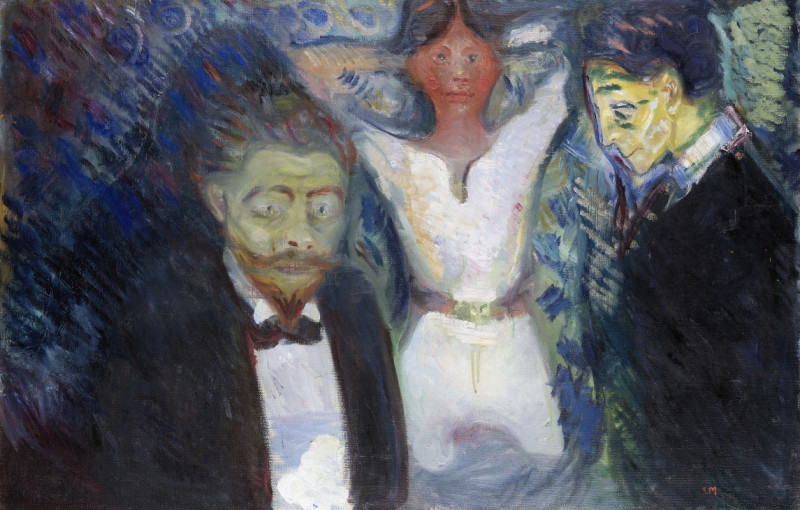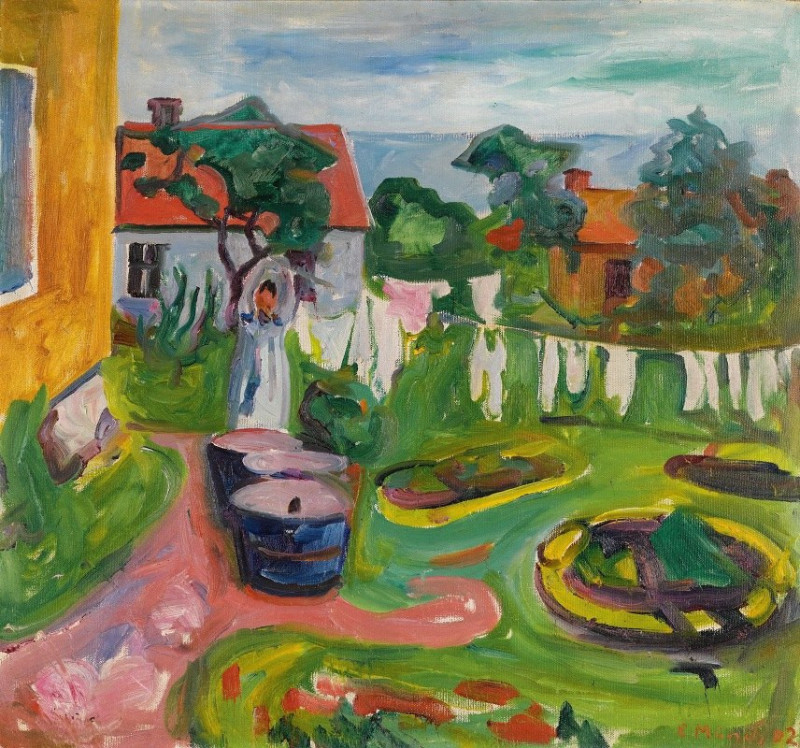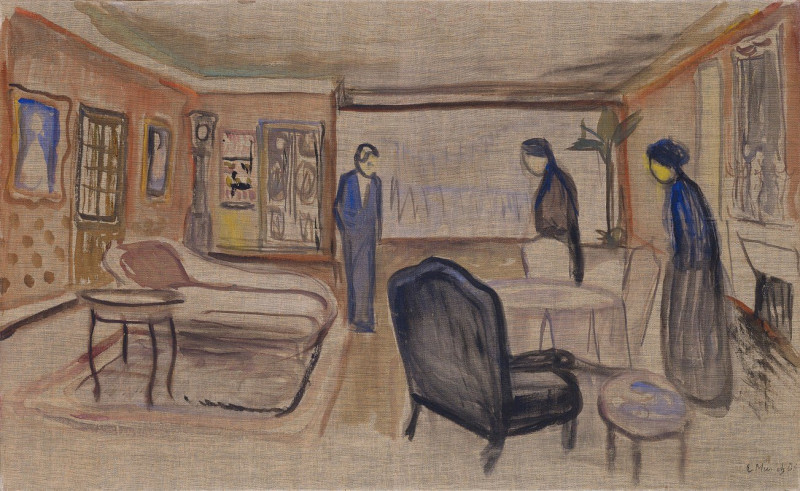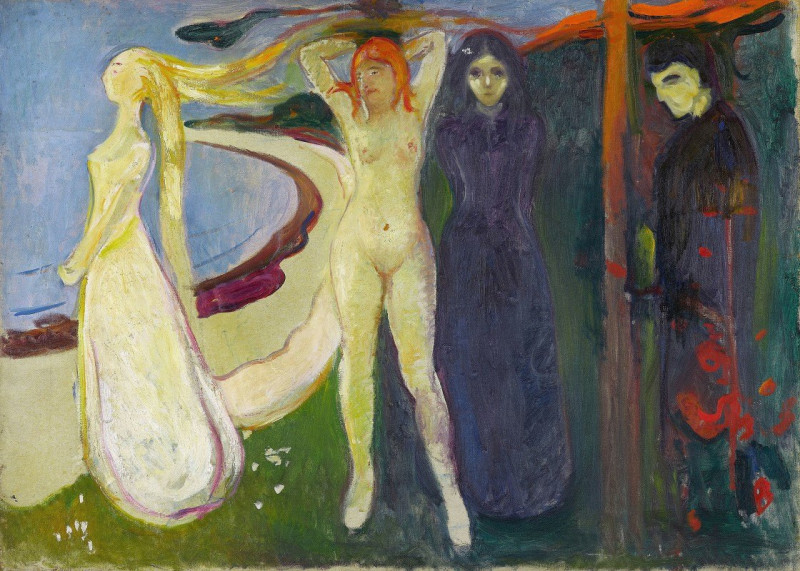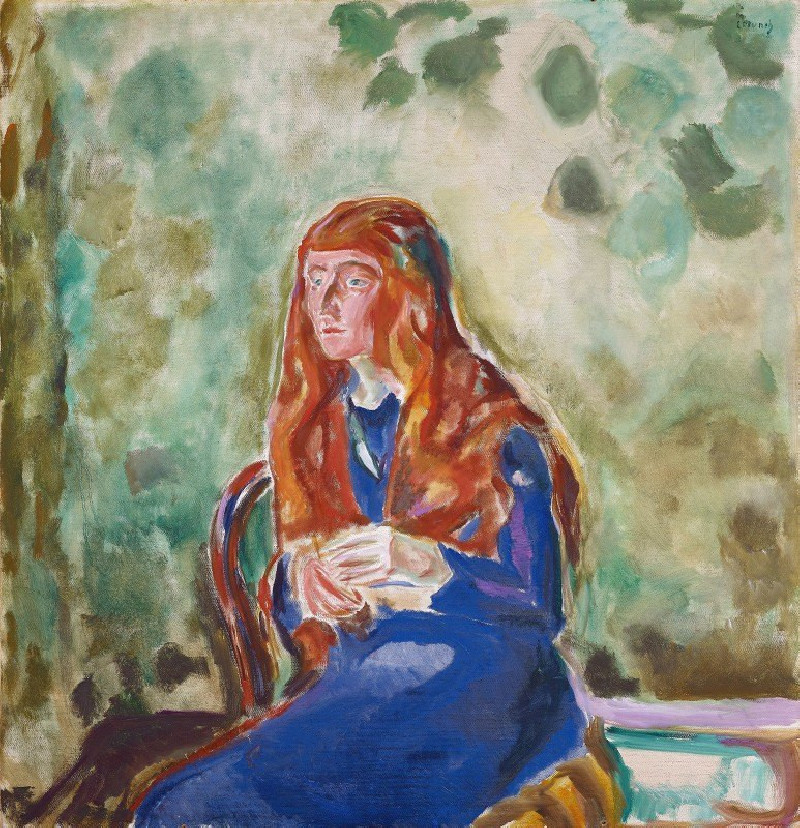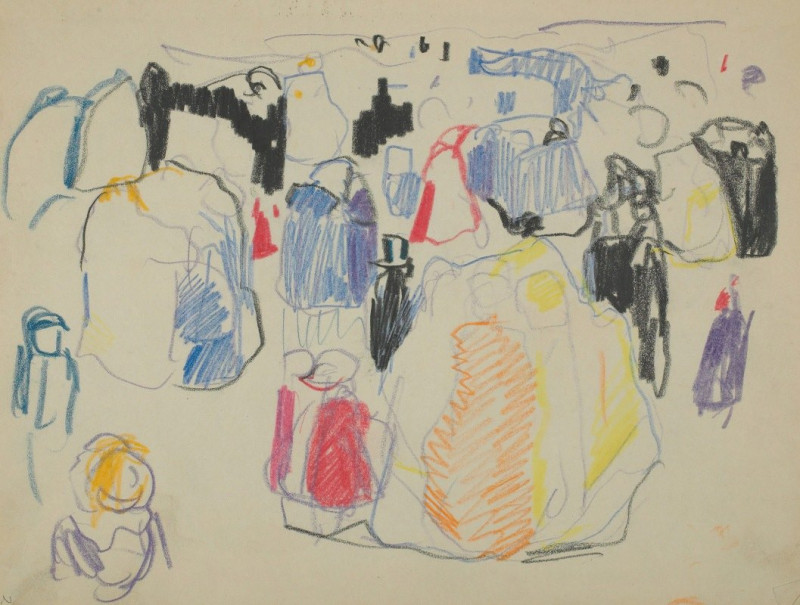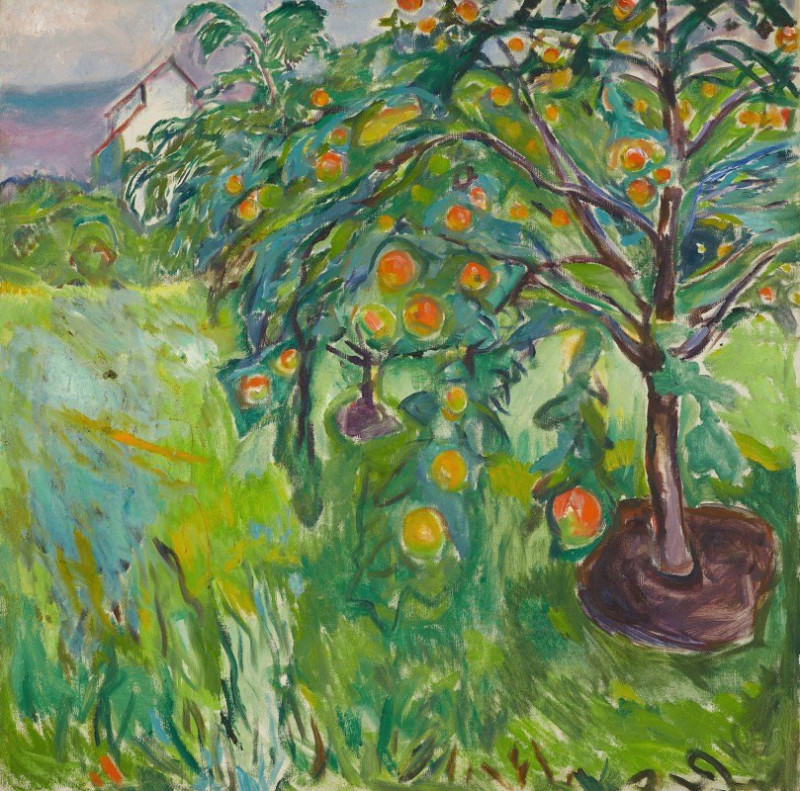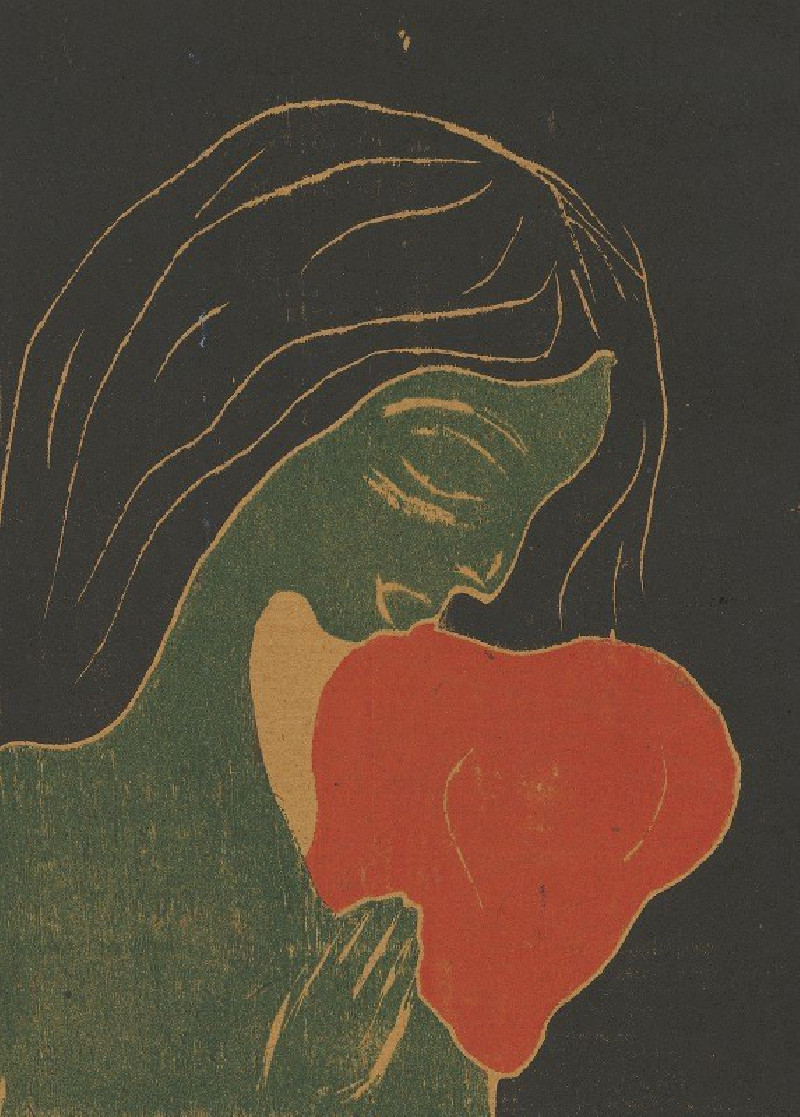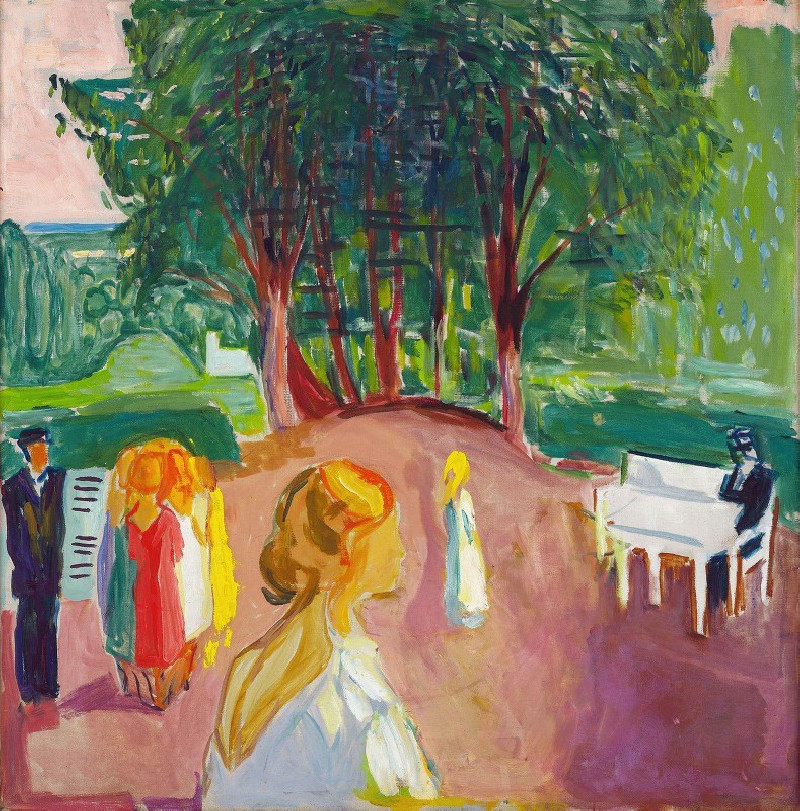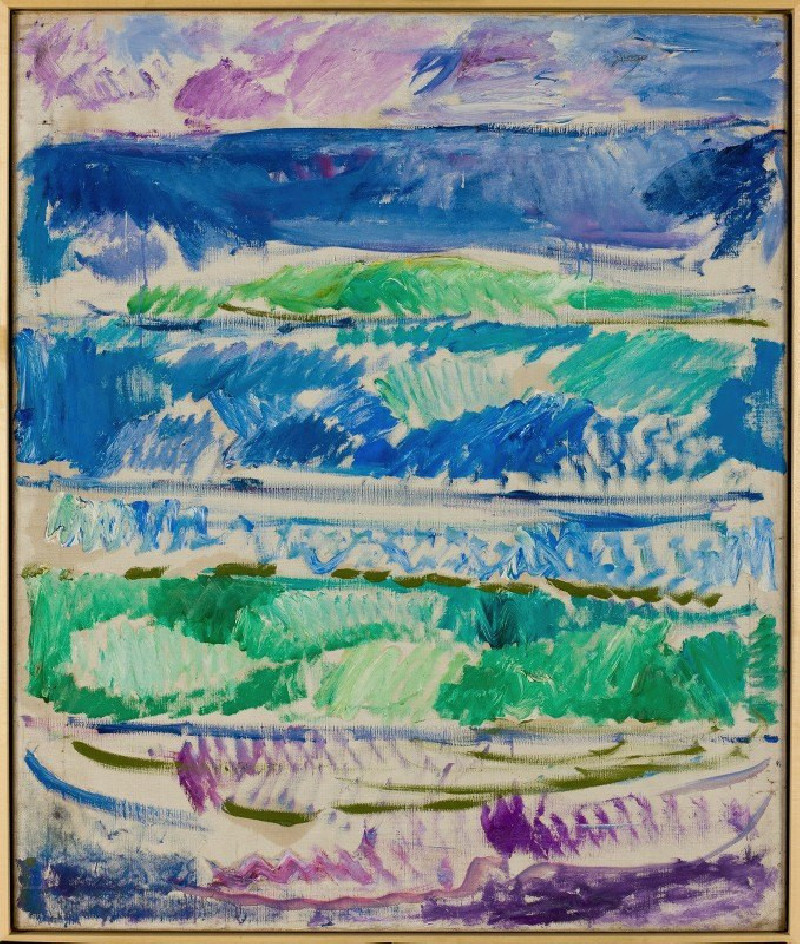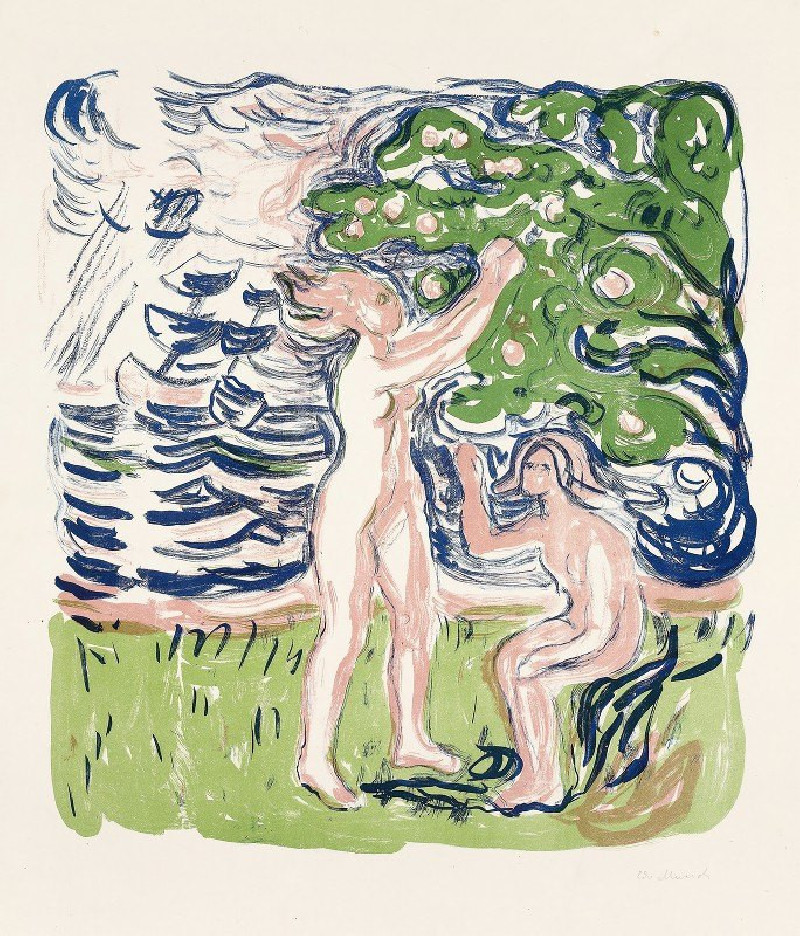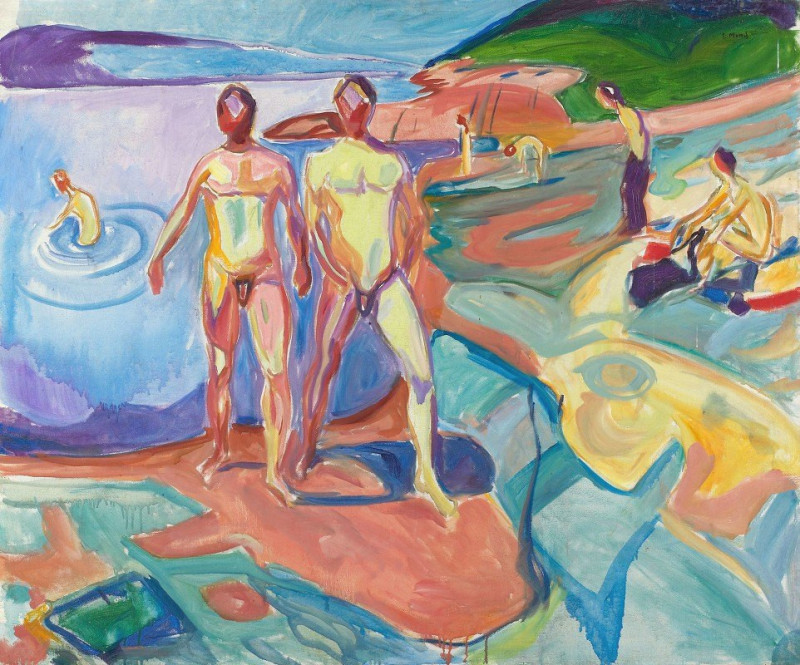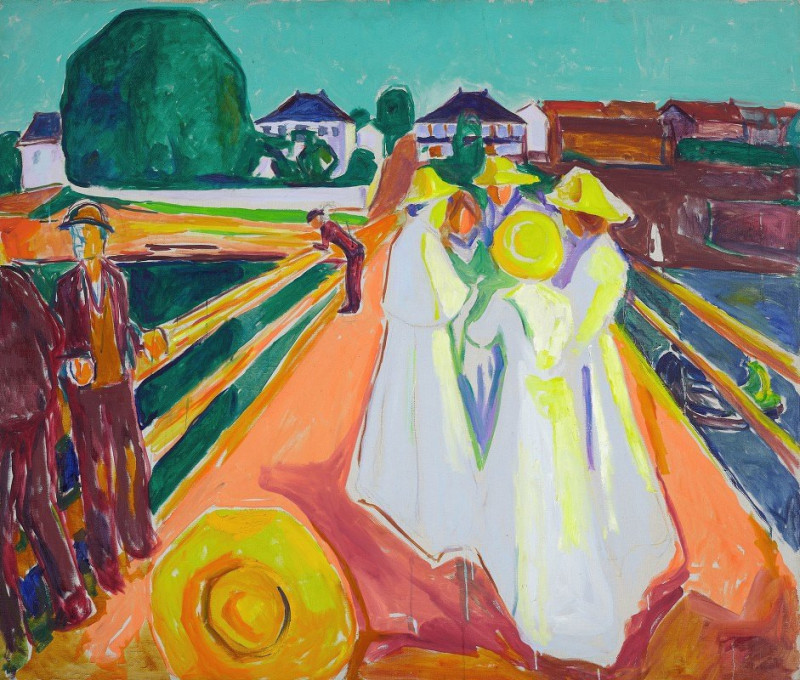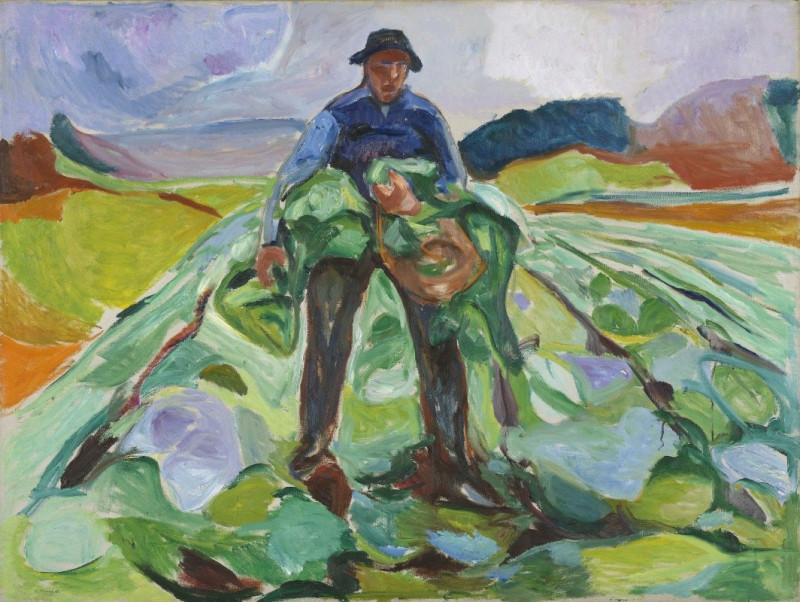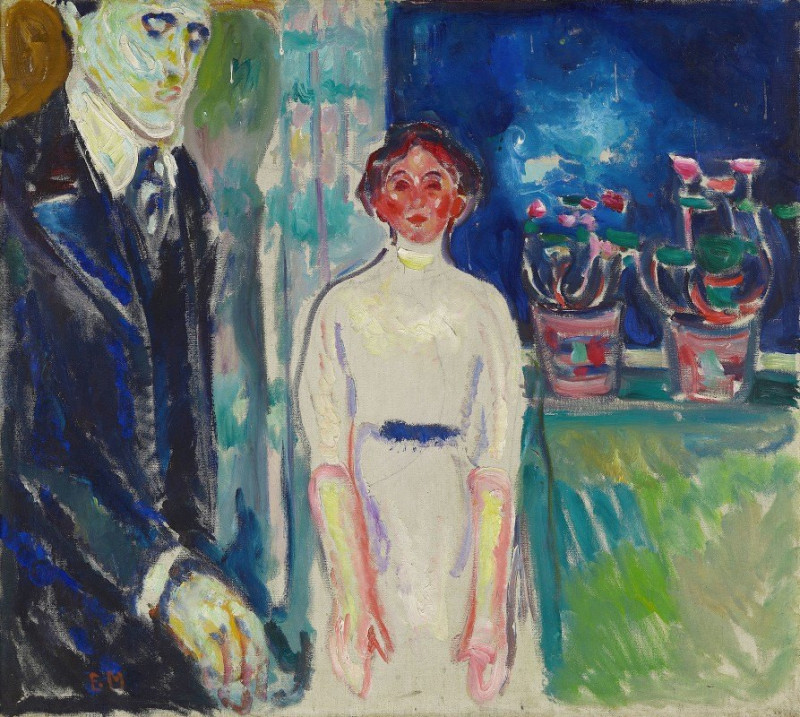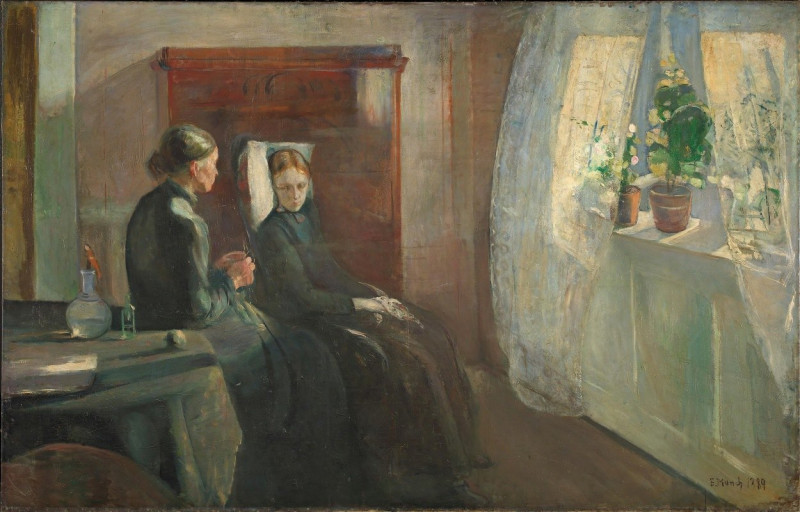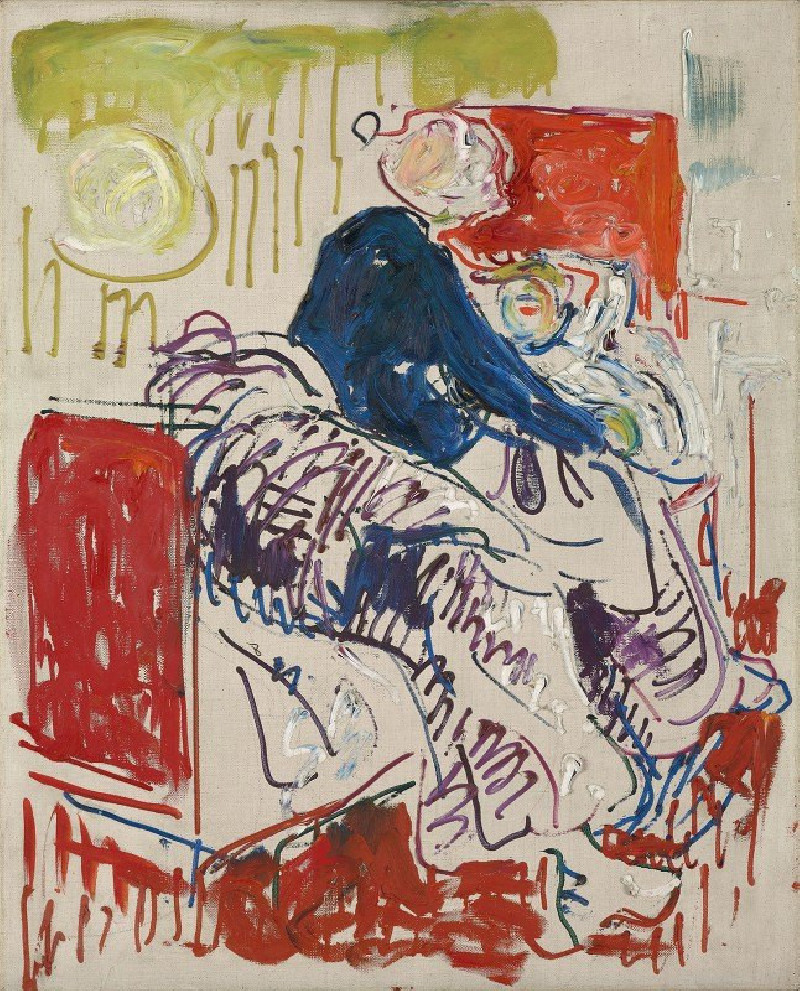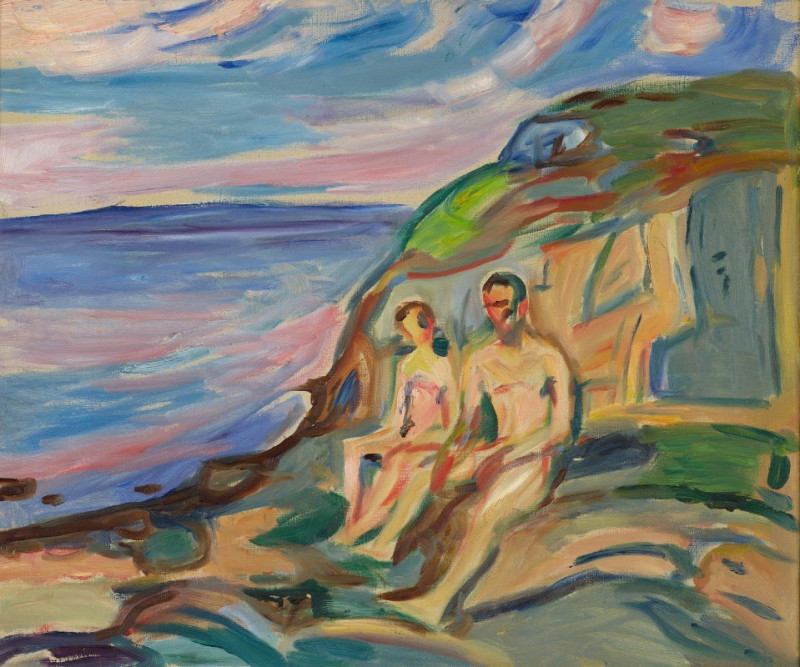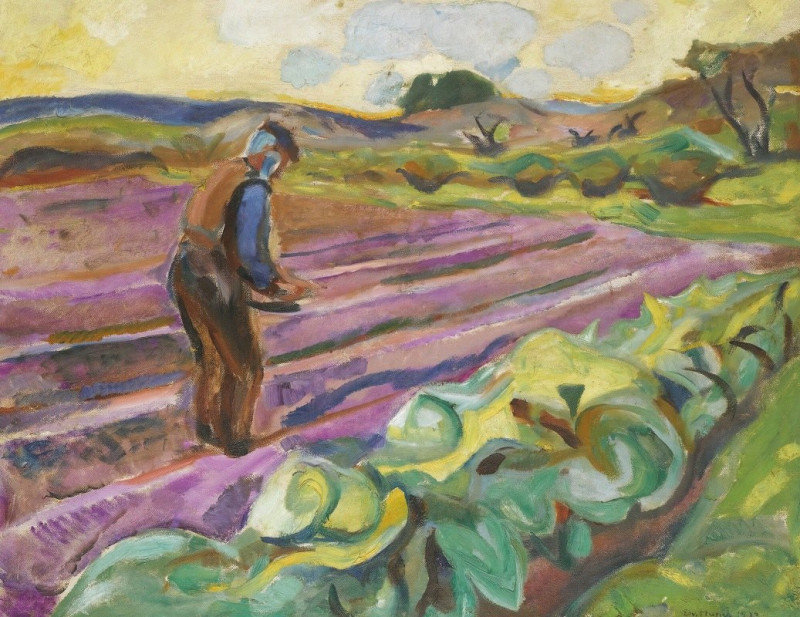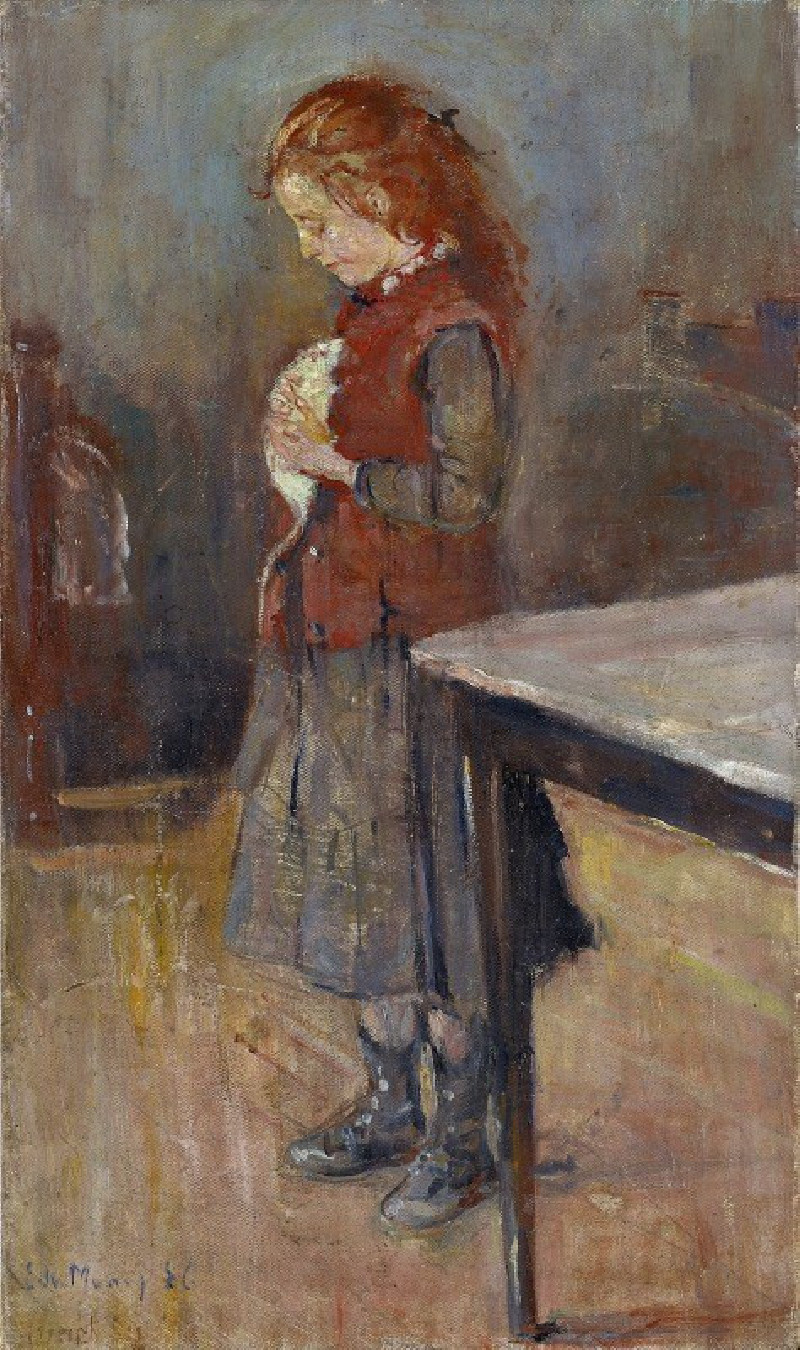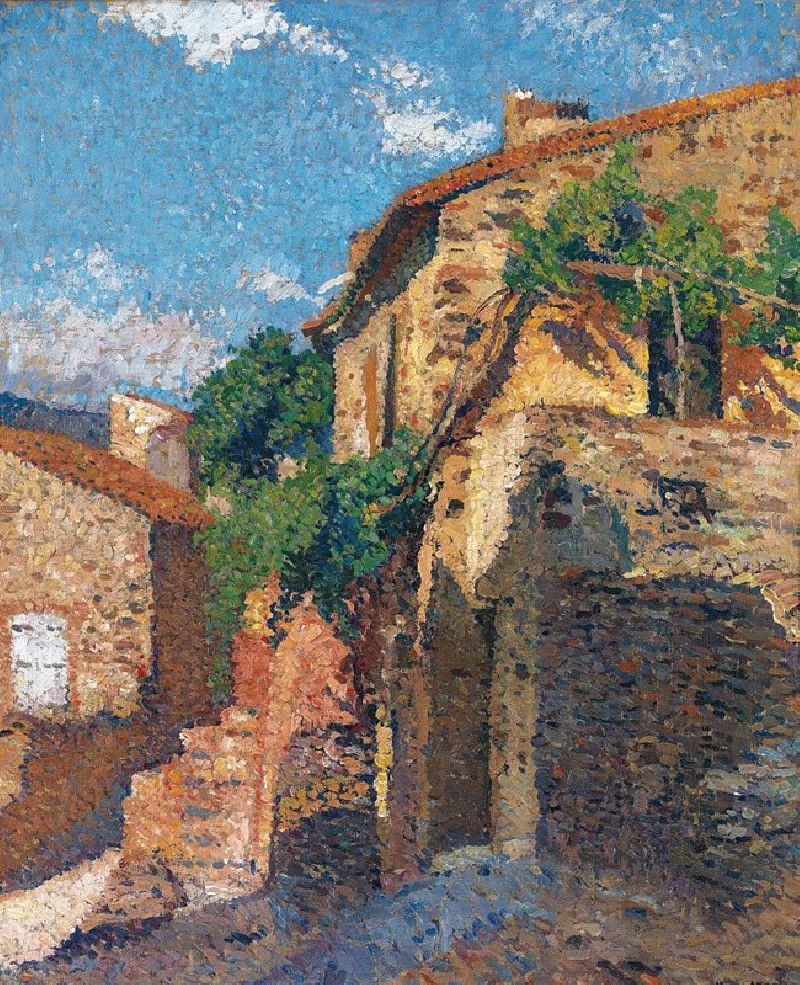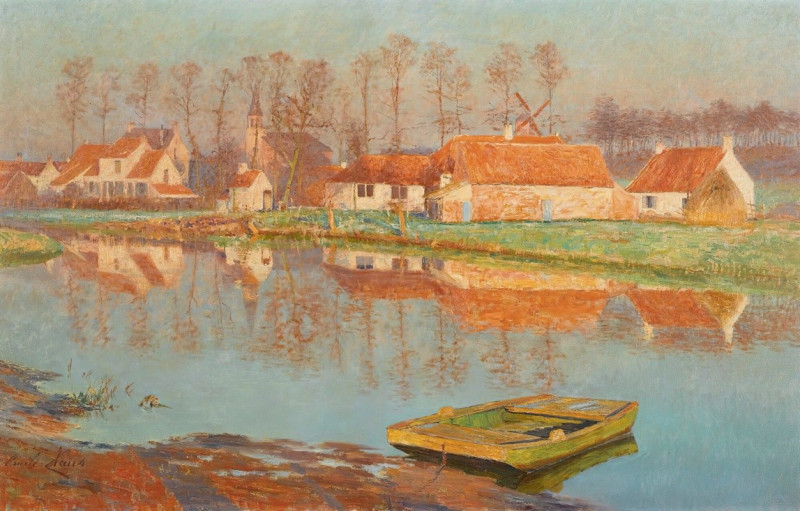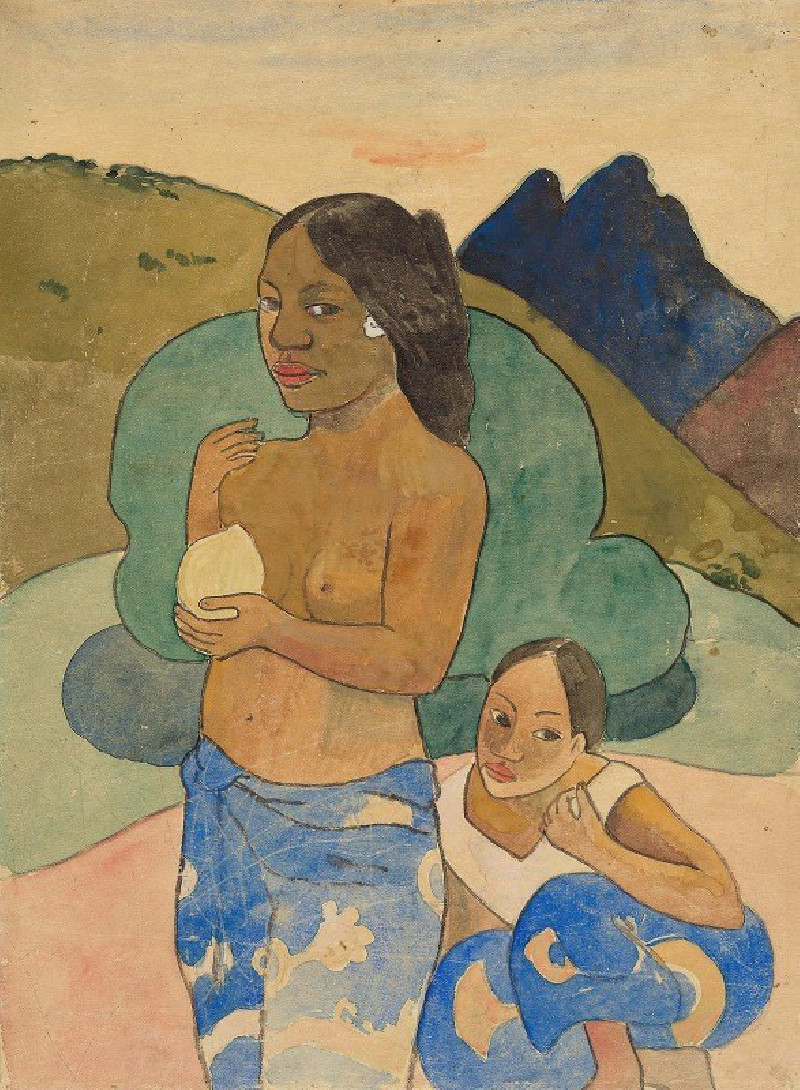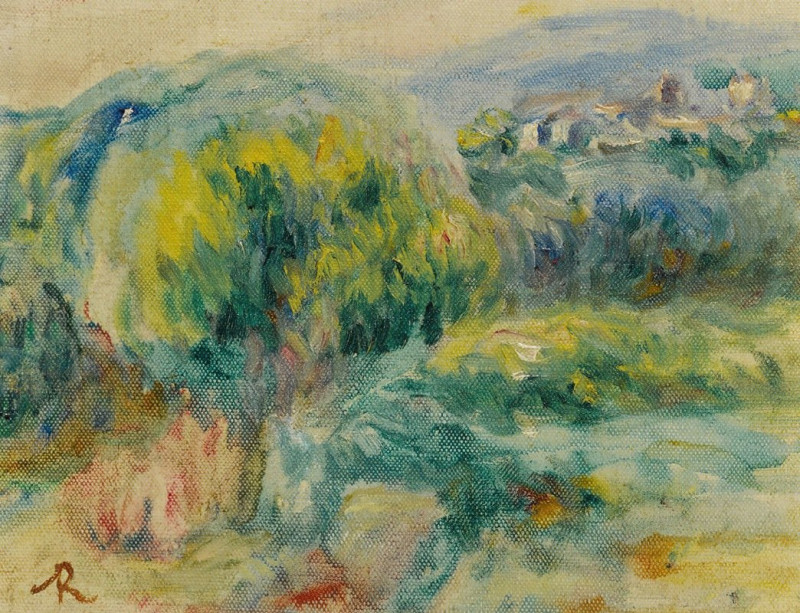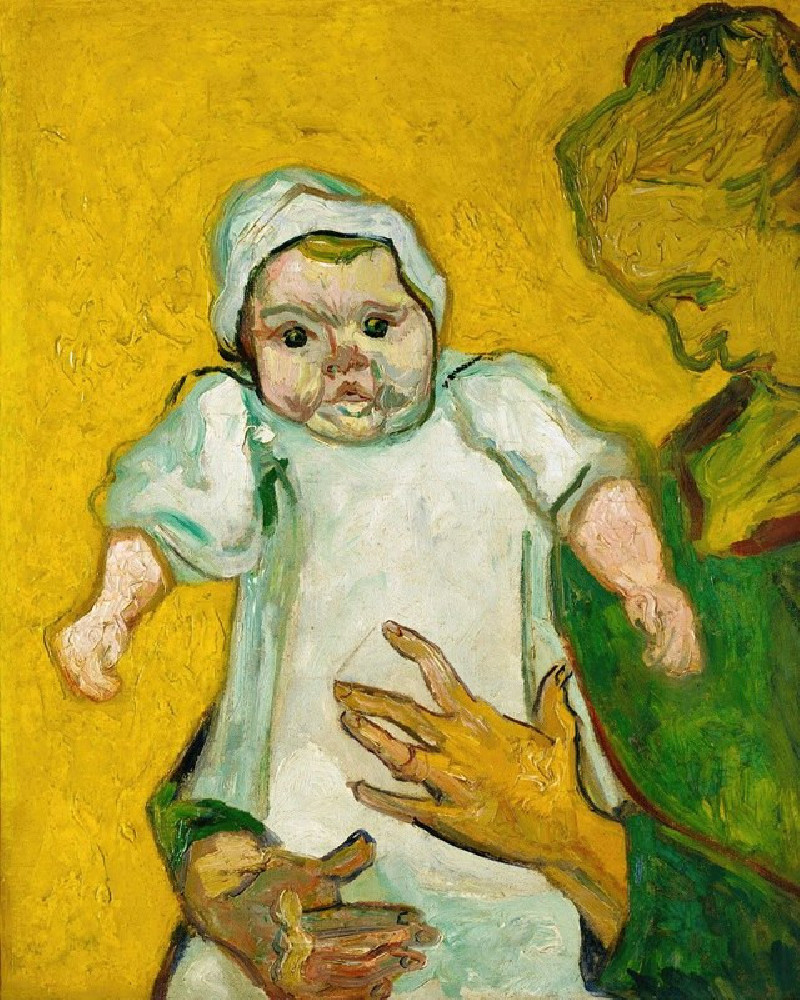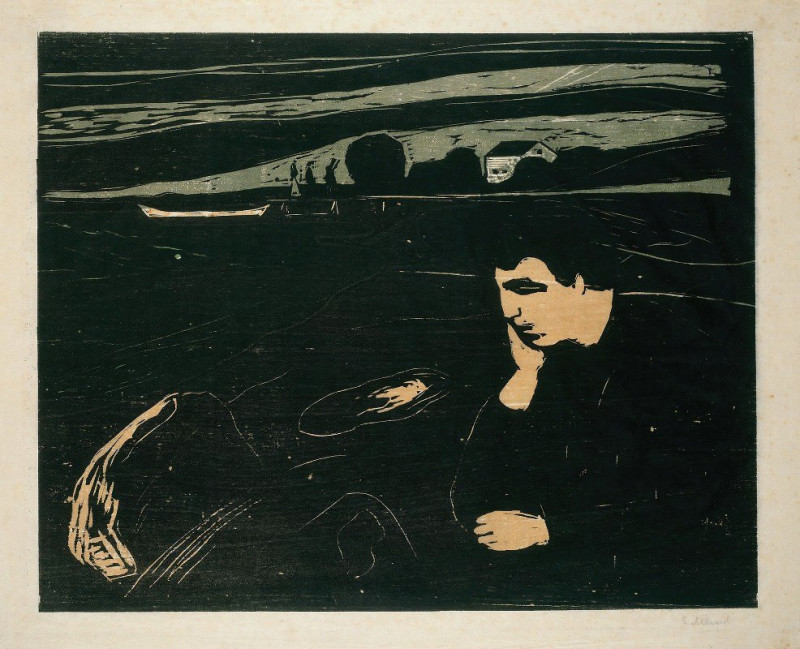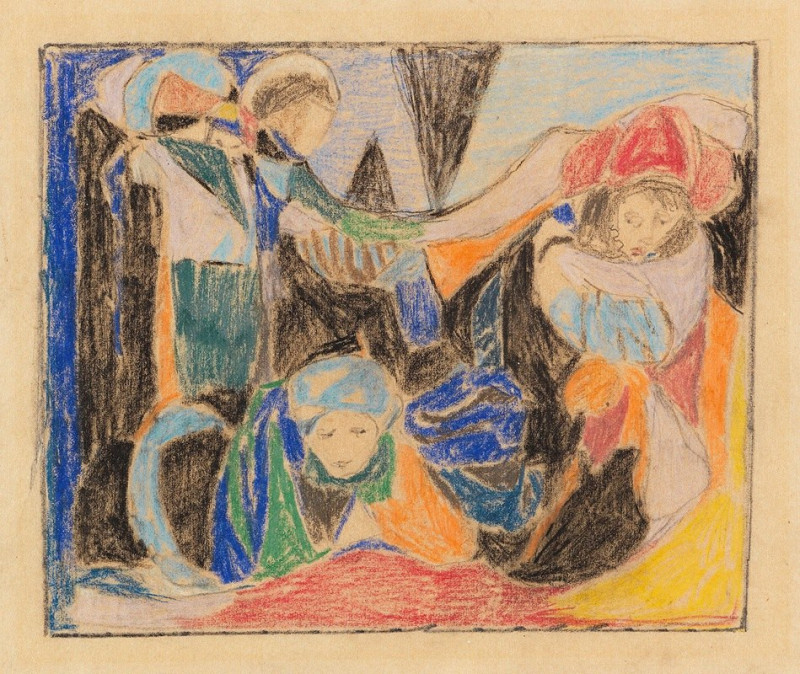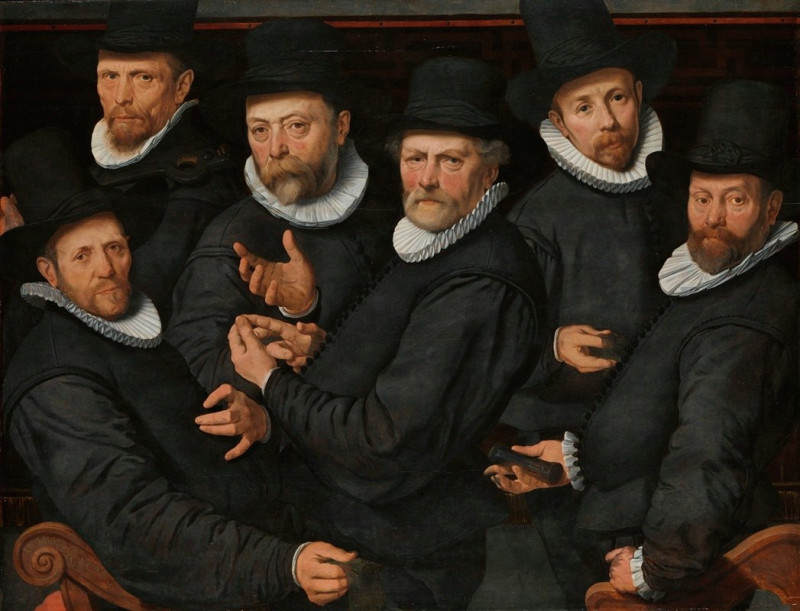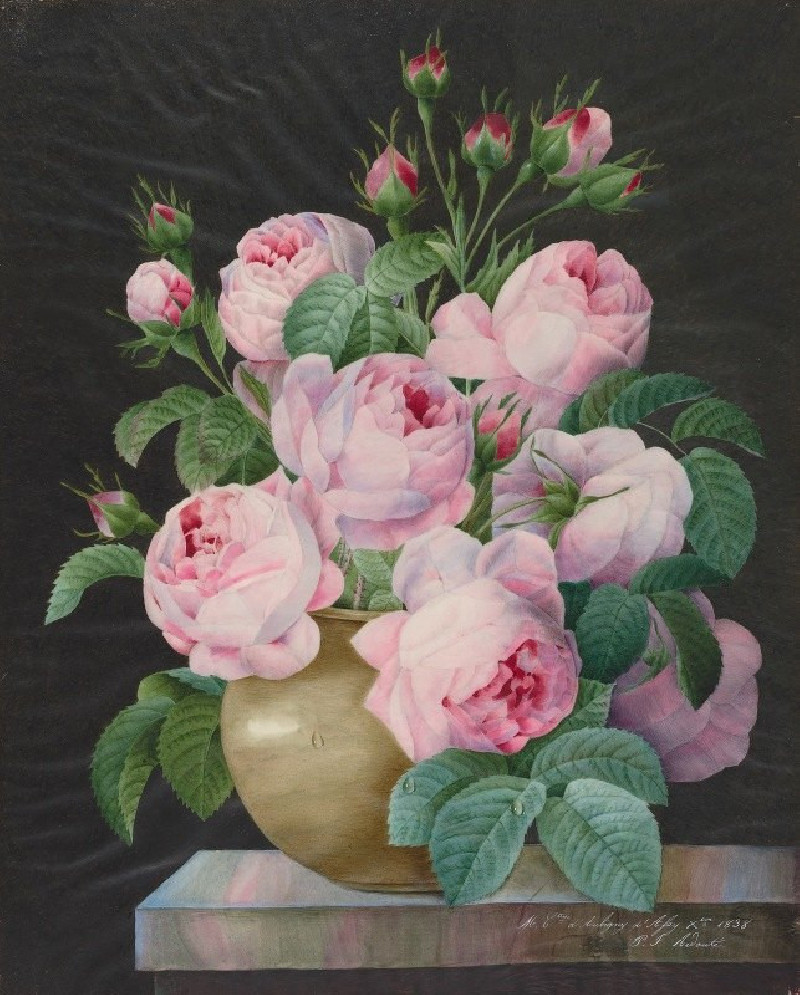Jealousy (1913)
Technique: Giclée quality print
Recommended by our customers
More about this artwork
"Jealousy" by Edvard Munch, painted in 1913, is a vivid and stirring depiction of human emotions, closely aligning with Munch's expressionist style. The painting captures the intense and tumultuous feelings associated with jealousy, a theme Munch explored in different versions throughout his career.In this particular rendering, three figures dominate the composition, each distinctly characterized by Munch's use of color, form, and expressive brushwork. The central figure is a woman in white, who stands prominently as the focal point. Her white dress contrasts sharply with the darker, more tumultuous colors surrounding her, perhaps symbolizing purity or the object of desire in the context of the painting. Her facial expression is somewhat ambiguous, serene yet detached, which amplifies the tension in the scene.To the left, there is a man whose face, painted in shades of green and yellow, displays a grotesque expression marked by wide eyes and a slightly open mouth, suggesting his shock or dismay. His greenish complexion might symbolize sickness or decay, commonly associated with feelings of envy or jealousy.On the right side of the canvas, another figure, also a man, appears with his face rendered in darker tones, predominantly blues and blacks. His features are softer, and his posture leans towards the woman, possibly indicating his longing or desiring gaze towards her.The background swirls with a mix of dark and vibrant colors, contributing to the emotional turmoil depicted in the painting.
Delivery
Returns
Edvard Munch (12 December 1863 – 23 January 1944) was a Norwegian painter. His best known work, The Scream (1893), has become one of Western art's most iconic images.
His childhood was overshadowed by illness, bereavement and the dread of inheriting a mental condition that ran in the family. Studying at the Royal School of Art and Design in Kristiania (today's Oslo), Munch began to live a bohemian life under the influence of the nihilist Hans Jæger, who urged him to paint his own emotional and psychological state ('soul painting'); from this emerged his distinctive style.

